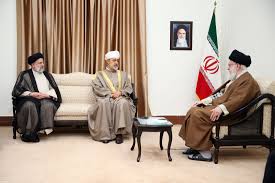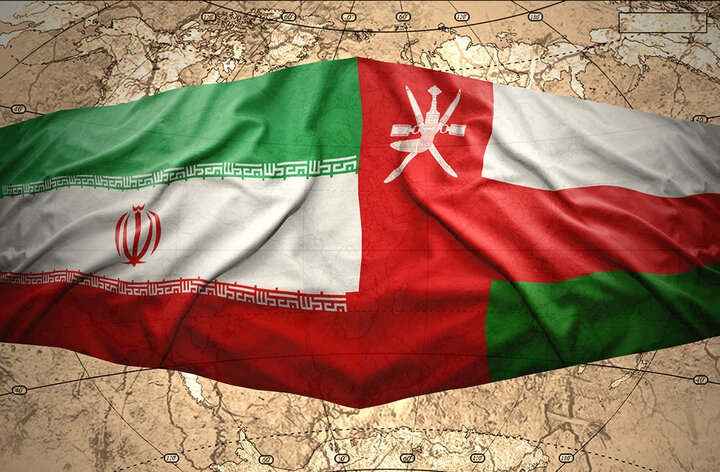A New Chapter in Bilateral Ambition
In the heart of the Middle East, two nations long sharing geography and history the Islamic Republic of Iran and the Sultanate of Oman are now stepping into a new economic chapter together. From cordial neighbourly ties to an increasingly ambitious trade alliance, the trajectory between them is pointing unmistakably upwards.
In recent months, trade statistics have shown an encouraging uptick. Iran’s exports to Oman have grown significantly, while Oman has initiated key agreements to bolster flows and eliminate obstacles. Both governments appear aligned in intent: to not just maintain, but to elevate their economic connection to record-setting levels.
What the Numbers Show
The numbers paint a compelling story of progress. In the first seven months of 2025, trade between Iran and Oman reached around 865 million dollars, with Iran’s exports accounting for over 390 million dollars of that. During the first five months of the year, Iran’s export growth to Oman stood at around 16 percent compared to the same period last year. Meanwhile, Oman’s legislative steps, including a royal decree ratifying a preferential trade agreement with Iran, are clearing the pathway for deeper trade.
What’s more, both countries are thinking big. There is a shared vision of boosting the trade volume into the tens of billions of dollars as high as 20 to 30 billion dollars, according to high-level Iranian officials.
In short, momentum is real, frameworks are being set, and optimism is clearly rising.
Why This Partnership Matters
Strategic Geography and Complementary Needs
Iran and Oman are advantageously situated in the Persian Gulf region, and their economic complementarities are increasingly being leveraged. Iran’s industrial output, from steel billets to petrochemical products, finds a willing market in Oman. Oman, for its part, is pushing to diversify its economy under programs like Oman Vision 2040, which emphasizes increased foreign trade, investment, and industrial development.
Political Goodwill and Stability
A strong foundation of diplomatic goodwill aids any economic partnership, and here the two nations have it. Their relations are marked by neighbourly interaction, mutual respect, and fewer tensions compared to many regional actors. That underlying political trust enables more ambitious trade discussions and joint projects.
Legal and Institutional Support
The recent ratification of a preferential trade agreement and efforts to remove non-tariff barriers indicate that trade is being treated not just as an afterthought but as a strategic component of bilateral relations. Oman’s announcement of tariff reductions, customs reforms, and investment facilitation heralds a new era of institutional support.
Together, these factors create fertile ground for trade to expand meaningfully.

Key Sectors Driving Growth
There are several sectors where the Iran-Oman trade engine is already in motion.
Non-oil exports from Iran: Iran is exporting increasing volumes of goods such as petrochemical products, steel, cement, foodstuff, horticulture, and other manufactured items to Oman.
Industrial cooperation and investment: Discussions are underway for joint industrial projects, investment funds bridging the two countries, and the optimization of supply chains.
Trade infrastructure links: Enhanced connectivity of land, sea, and air routes are part of the agenda, recognizing that raw trade potential must be matched with logistics and physical infrastructure.
Re-exports and transit trade: Oman is emerging as a transit hub for re-exports and trade that loops back to Iran, which adds an interesting dynamic beyond simple one-way trade.
Challenges That Remain
Of course, ambitious visions come with their share of obstacles.
Sanctions and Financial Mechanisms
For Iran, international sanctions and the challenges of accessing global financial systems continue to complicate trade flows. Ensuring smooth banking and transaction mechanisms with Oman remains crucial.
Logistics and Connectivity
While infrastructure plans are being floated, translating them into concrete, operational logistics networks like ports, transport corridors, and customs efficiency will take time, investment, and coordination.
Product Diversification and Value Addition
Much of the current trade is built on raw or semi-processed goods. To truly elevate the partnership, both nations will benefit from moving into higher-value manufacturing, joint R&D, and services sectors.
Regional Competitiveness and Geopolitics
The Gulf region is dynamic and competitive. Iran and Oman will need to navigate not only regional tensions but also competition from other trade partners seeking the same corridors, routes, and investments.
But the good news is that both sides appear aware of these challenges and are taking steps to address them, which strengthens the prospects of success.

What This Means for Local Businesses and Workers
For entrepreneurs, manufacturers, and workers in both countries, the rising trade relationship brings tangible opportunity.
Iranian manufacturers who might previously have focused on domestic markets now have a nearby and accessible export destination in Oman.
Omani firms looking for upstream or downstream industrial partners could lean on Iranian capabilities in manufacturing, chemicals, metallurgy, and agriculture.
Job creation is plausible in sectors such as logistics, transport, warehousing, and industrial parks — especially if infrastructure development accelerates.
With institutional frameworks improving, small and medium-sized enterprises may find it easier to enter cross-border trade, reducing dependence on large state-owned enterprises.
For both societies, this means potential for economic diversification, stronger incomes, and deeper people-to-people business linkages.
Looking Ahead: What to Watch
Here are a few key indicators to monitor as this trade story evolves.
Actual trade volume targets vs outcomes: Will trade hit the ambitious 20 to 30 billion dollar mark?
Implementation of the Preferential Trade Agreement: How swiftly and smoothly will customs, tariffs, and documentation reforms be enforced?
New joint investment funds and industrial zones: Signals commercial trust and long-term ambition.
Logistics and infrastructure roll-out: New ports, transport corridors, and cross-border facilities will matter.
Expansion beyond goods into services, technology, and value-added sectors: This will mark a deeper, more resilient partnership.
A Shared Vision for Prosperity
What’s especially compelling in this partnership is the human dimension. This is not just about statistics and trade figures, but about people the Iranian manufacturer who now dreams of his goods reaching an Omani warehouse, the Omani entrepreneur who sees Iranian-Omani logistics hubs as her next venture, the communities near port towns and industrial zones that may see jobs, growth, and opportunity.
By aligning their economic destinies, Iran and Oman are saying they are neighbours, yes, but beyond that, they are companions in progress. The notion of a record-breaking trade relationship is more than a headline. It represents hope for greater prosperity, greater connection, and a future in which both nations develop together.
If they can maintain momentum, address obstacles pragmatically, and keep the human and institutional elements working in tandem, the promise they share may well be fulfilled and quite possibly surpassed.
Do follow Gulf Magazine on Instagram.
Also Read – Oman’s Central Bank Cuts Repo Rate to 4.50% to Boost Economic Growth



